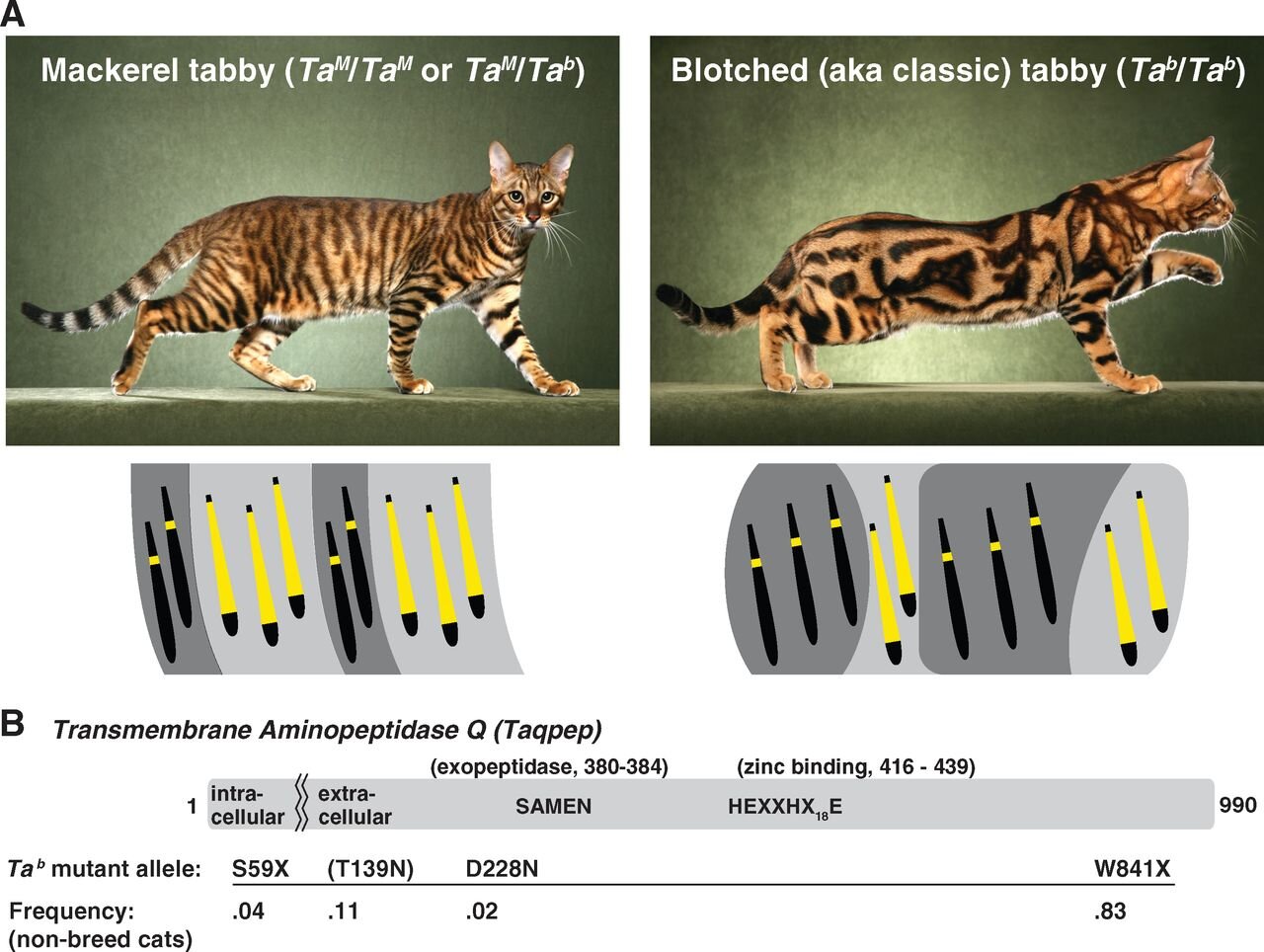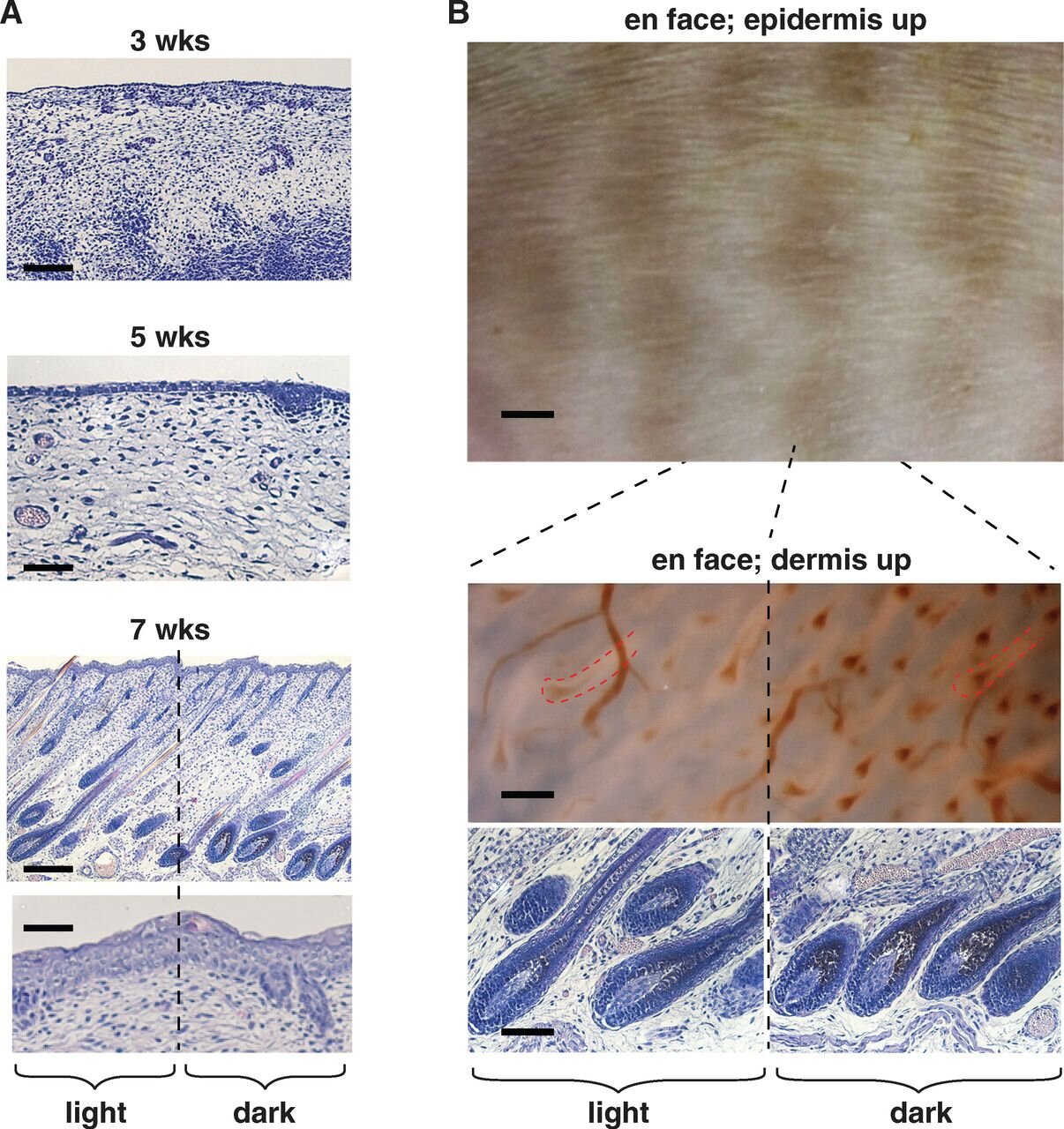Maine Coon Patterns
Maine Coons come in classic, mackerel, spotted/ticked, solid, and torbie. All of these coats can be “with white” of varying degrees (low or high). White markings can present as van, bi-color and mitted.
Maine Coon Classic Tabby Pattern
Maine Coon Spotted Tabby Pattern
Maine Coon Ticked Tabby Pattern
Classic Tabby Pattern
Classic Tabby Maine Coons should present with swirls of pattern on the body. Pattern markings should be dense, clearly defined, and broad. Legs evenly barred with bracelets coming up to meet the body markings. Tail evenly ringed. Several unbroken necklaces on neck and upper chest, the more the better. Frown marks on forehead form an intricate letter “M”. Unbroken line runs back from outer corner of eye. Swirls on cheeks. Vertical lines over back of head extend to shoulder markings which are in the shape of a butterfly with both upper and lower wings distinctly outlined and marked with dots inside outline. Back markings consist of a vertical line down the spine from butterfly to tail with a vertical stripe paralleling it on each side, the three stripes well separated by stripes of the ground color. Large solid blotch on each side to be encircled by one or more unbroken rings. Side markings should be the same on both sides. Double vertical rows of buttons on chest and stomach.
Mackerel Tabby Pattern
Mackerel Maine Coons should have stripes going vertically from the spine line to the belly. Markings should be dense, clearly defined, and all narrow pencillings. Legs evenly barred with narrow bracelets coming up to meet the body markings. Tail barred. Necklaces on the neck and chest distinct, like so many chains. Head barred with an “M” on the forehead. Unbroken lines running back from the eyes. Lines running down the head to meet the shoulders. Spine lines run together to form a narrow saddle. Narrow pencillings run around the body.
Spotted/Ticked Tabby Pattern
Shows pronounced ticking on body and when viewed from above will show darkening at the dorsal crest but will otherwise be free from pattern or any noticeable spots, stripes or blotches. Body hairs will be ticked with various shades of marking color and ground color. The cat will show full tabby markings on face and legs and the lighter underside may also show tabby markings.
Solid
If a cat inherits the “dilute” genes, black becomes blue and red becomes cream.
Calico, Torbie and Torties
Calicos, torties, and torbies all belong to a category of cat colors called tricolor.
Calico is actually a cat coat pattern of which there are four different color variations.
Torties will have solid black patches (or gray if dilute). Black and red ( or blue and cream ) mixed together to create a mottled, speckled look
Torbie is a tortie with a tabby pattern in a darker color. Torbie is short for tortoiseshell-tabby. Tortoiseshell is actually a cat coat pattern of which there are four different color variations. Their overall coloring typically appears “brindle”. This coat can come in mackerel, classic or ticked tabby pattern. Named for its similarity to tortoiseshell material. Like calicos, tortoiseshell cats are almost exclusively female. Male tortoiseshells are rare and are usually sterile.
You Should Know
Any Coat Can be With White!
Mitted Pattern
The white may only be located on paws, belly, chest and chin.Bi-Color Pattern
White is permitted much further up the back legs and on the facial area.Van Pattern
White is predominant throughout the cat fur with colored patches. The patches of color are usually located on the face and tail.
Diagram - Coat Patterns (Top View)
Diagram showing classic, mackerel, spotted and ticked coat patterns.
Diagram - CFA Cat Colors & Patterns
Based on CFA standards. This was made using more sources than I can list, but one of the most helpful sites I found that helped me sort this out is www.tenset.co.uk/catgen/catsof… .
Diagram - Pigmentation Patterns
LINK: Specifying and Sustaining Pigmentation Patterns in Domestic and Wild Cats
Science21 Sep 2012 : 1536-1541 - By Christopher B. Kaelin, Xiao Xu, Lewis Z. Hong, Victor A. David, Kelly A. McGowan, Anne Schmidt-Küntzel, Melody E. Roelke, Javier Pino, Joan Pontius, Gregory M. Cooper, Hermogenes Manuel, William F. Swanson, Laurie Marker, Cindy K. Harper, Ann van Dyk, Bisong Yue, James C. Mullikin, Wesley C. Warren, Eduardo Eizirik, Lidia Kos, Stephen J. O’Brien, Gregory S. Barsh, Marilyn Menotti-Raymond
The genes specifying tabby cat coat patterns also affect big cats, including king cheetahs.
References
http://cfa.org/Portals/0/documents/breeds/standards/maine.pdf
https://science.sciencemag.org/content/337/6101/1536/tab-figures-data









